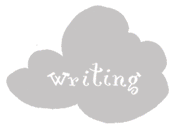

|
Ralph Steadman Pictures that are worth a thousand gonzo words From the March 9, 2006, Boston Globe The cartoonist Ralph Steadman arrived in the United States for the first time on an assignment to illustrate a piece on the Kentucky Derby. There at Churchill Downs, the bearded, tweed-coated young Englishman first met his collaborator, a human tornado by the name of Hunter S. Thompson. They installed themselves in the clubhouse to watch the two-minute spectacle. When everyone stood to face the flag and sing ''My Old Kentucky Home," Steadman faced the other way, the better to sketch his subjects. Thompson wrote, ''Somewhere up in the boxes a voice screeched, 'Turn around, you hairy freak!'" The result, 1970's ''The Kentucky Derby Is Decadent and Depraved," is a lunatic account in Thompson's words and Steadman's pictures of Thompson's cockamamie behavior at the race and how Steadman, no innocent himself, got whirlpooled down with him. The piece for Scanlan's magazine marked the birth of gonzo journalism, that ecstatically subjective, intoxicated, brutal, clowning brand of reporting most famously enshrined in ''Fear and Loathing in Las Vegas," the book they collaborated on the following year. ''I was naive then. I trusted all things -- and all beasts," Steadman recalled somewhat facetiously in 2000. ''What I saw, or thought I saw, I drew -- it was 'my filthy habit' -- Hunter's phrase." ''Drawing Breath: A Retrospective Whisper From Ralph Steadman" -- a four-decade survey of Steadman's work on view at the Art Institute of Boston through March 19 -- shows where his filthy habit got him. The 60 drawings and prints chosen by Steadman, dashed out for books, magazines, and newspapers, are a rogues' gallery of presidents and prime ministers, fat cats, goons, and rioting police. Steadman, who turns 70 this May, has a reputation for drawing like a man possessed, splashing and spraying ink with wild abandon. But see how precisely he renders the chubby rabbit, off balance in his haste, goggling his pocket watch, in his 1966 pen-and-ink sketch ''The White Rabbit" from ''Alice in Wonderland." Steadman is an excellent marksman, always in control of his art. Richard Nixon, in Steadman's universe the goon of all goons, appears in a pair of pen-and-ink drawings, complete with beady eyes, hunched shoulders, and five-o'clock shadow. When you see the title ''Fear and Loathing at the End of the Line" scribbled atop a portrait from 1973 (the year before Nixon resigned the presidency) or the splatters in 1979's ''Nixon Pissing Blood (Where the Buffalo Roam)," you can be sure Steadman's recklessness is purposeful. The power of his drawings comes from the contrast between his fine, controlled pen line (always a pen, not the voluptuous line of a brush) and the unhinged scrawls and sprays and splashes of ink. It's like you're watching him try to keep his rage in check so we can have a reasonable discussion about Vietnam or the war in Iraq or Nixon's dirty tricks, but his anger and disgust get the better of him and he explodes into sputters and raving. There's a thrilling righteousness to Steadman's acid caricatures, even if, in effect, he's like the shirtless kook -- a Thompson look-alike -- who is lurking in the bathroom behind Nixon in the ''Pissing" drawing and has pulled off his shoe and aims to wallop the ex-prez with it. Nearby there's a great 1986 drawing of Vladimir Lenin shouting at the hollow-eyed masses in Moscow's Red Square, the malignant heart of the Soviet experiment embodied in a crimson flag, snapping in the wind, showering all with blood. But post-Nixon, Steadman's targets often seem too small for his fury. Whatever their faults, Ronald Reagan, Bill Clinton, Tony Blair, and George W. Bush don't have the majestic slimy rot of Nixon and his gang. One can smile and still be a villain, but their smiling is Teflon to Steadman's barbs. And maybe his metaphors have grown a little cliched. This difficulty is apparent in such works as 2002's ''The Suicide Bomber of Baghdad." Here Bush is a towering doofus Goliath stomping over ancient Babylon (that's Baghdad to you, bub) with a fizzing bomb shaped like planet earth strapped to his belly. Steadman urges us to oppose the war in Iraq by warning that it is heavy-handed militarism, as wanton and cruel as what the West has suffered from suicide bombers, but on a vaster scale. Successful political caricature carves away complexity to release the terrible power of an idea stated simply. But despite Steadman's sharp drawing, he's all over the place here: Bush is the Colossus of Rhodes, Bush is a bonehead, Bush is a terrorist. The joke seems tired, too muddled to hit the target the cartoonist has in his sights. For all Steadman's gonzo bluster, ultimately he promotes a forgiving humanism. Again and again in his drawings, he demands to know why so many pleasures in life -- sex, loud music, intoxication, art -- get ruled ''filthy habits," while, as he sketches it, great evils -- wars and corruption, pollution and torture, thuggery of all kinds -- continue unabated with the endorsement of our chosen leaders. |